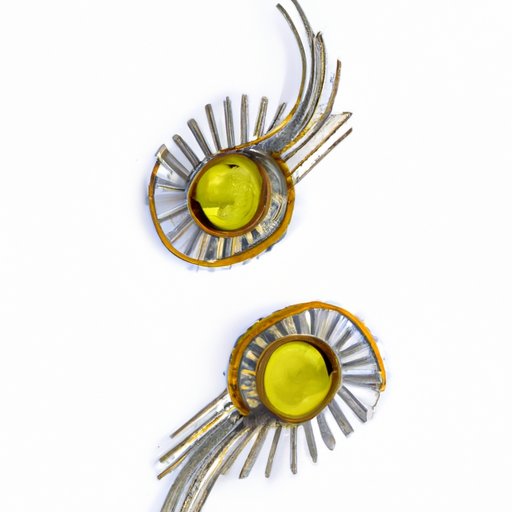I. Introduction
A bindi is a small dot or decorative mark worn by women in many South Asian cultures, particularly Hindus. It is sometimes referred to as a ‘tikka’ or ’tilak’ and is traditionally applied to the forehead between the eyebrows. In recent years, bindi has seen a resurgence as a fashion statement and cultural identifier. Understanding the cultural significance of a bindi is important, particularly in today’s world, where cultural appropriation and misrepresentation are common.
II. The Evolution of Bindi
Bindi has evolved from being a traditional cultural symbol to a fashion statement in recent years. It is no longer just a religious symbol but also a way of expressing an individual’s style. Bindi has undergone many changes, from being plain, simple, and discreet to being bold, flashy, and elaborate. Today, bindi is not only popular among South Asian women, but it has also been embraced by the fashion industry and popular culture.
III. History of Bindi
The origin of the bindi can be traced back to ancient Hindu texts, where it was believed to have spiritual and religious significance. It is also believed that the bindi was used to ward off evil spirits and protect the body against any negative energy. Over time, the use of bindi has changed and evolved, and it has been worn by both men and women at different times in history.
IV. Exploring the Cultural Significance of Bindi
Bindi has a deep spiritual and cultural significance in Hinduism and other South Asian cultures. For many, it is a way to connect with their faith and culture. The bindi represents the third eye or the ‘ajna chakra,’ which is believed to be the center of consciousness and enlightenment. It is also a symbol of femininity and marital status. In addition, bindi is worn during religious ceremonies and festivals, and it is believed to bring good luck and prosperity.
V. Everything You Need to Know About Wearing a Bindi
There are different types of bindi, including the traditional round or oval bindi, the crystal bindi, the sticker bindi, and the designer bindi. The application of bindi involves cleaning the area around the forehead and removing any oil or grease. Next, the bindi is applied using a special adhesive or with kumkum paste. Finally, it is placed perfectly between the eyebrows. It is important to note that bindi shouldn’t be worn haphazardly, as it carries religious and cultural significance.
VI. Uncovering the Unseen Power of Bindi
Bindi is more than just a small dot on the forehead. It brings a sense of empowerment to women, who wear it as a symbol of their identity, culture, and tradition. The bindi has a spiritual and emotional significance that is unique to every woman. It represents courage, strength, and wisdom, and it is a reflection of the inner beauty of a woman.
VII. The Beauty and Symbolism of Bindi
In addition to its cultural significance, the bindi has an aesthetic appeal that has made it a fashionable accessory in recent years. Bindi comes in different sizes, shapes, and designs, and it can be worn to complement an outfit or enhance an overall look. Different types of bindi have different meanings, and it is essential to choose the right one to match individual style and personality.
VIII. The Controversies Surrounding Bindi
The use of bindi in popular culture and Western fashion has stirred up controversy over the years. Some have accused the fashion industry of appropriating South Asian culture and commodifying it for profit. In India, bindi has been at the center of various debates, including its use by non-Hindu women and its association with patriarchy and misogyny. It is essential to respect the cultural and religious significance of bindi and use it appropriately.
IX. Conclusion
Understanding the cultural significance of bindi is essential, particularly in today’s world, where cultural misappropriation and disrespect are common. Bindi is more than just an accessory or fashion statement; it is a symbol of identity, culture, and tradition. It has a deep spiritual and emotional significance that cannot be overlooked. As such, it is important to find a balance between embracing the beauty and significance of bindi while respecting its cultural and religious roots.
